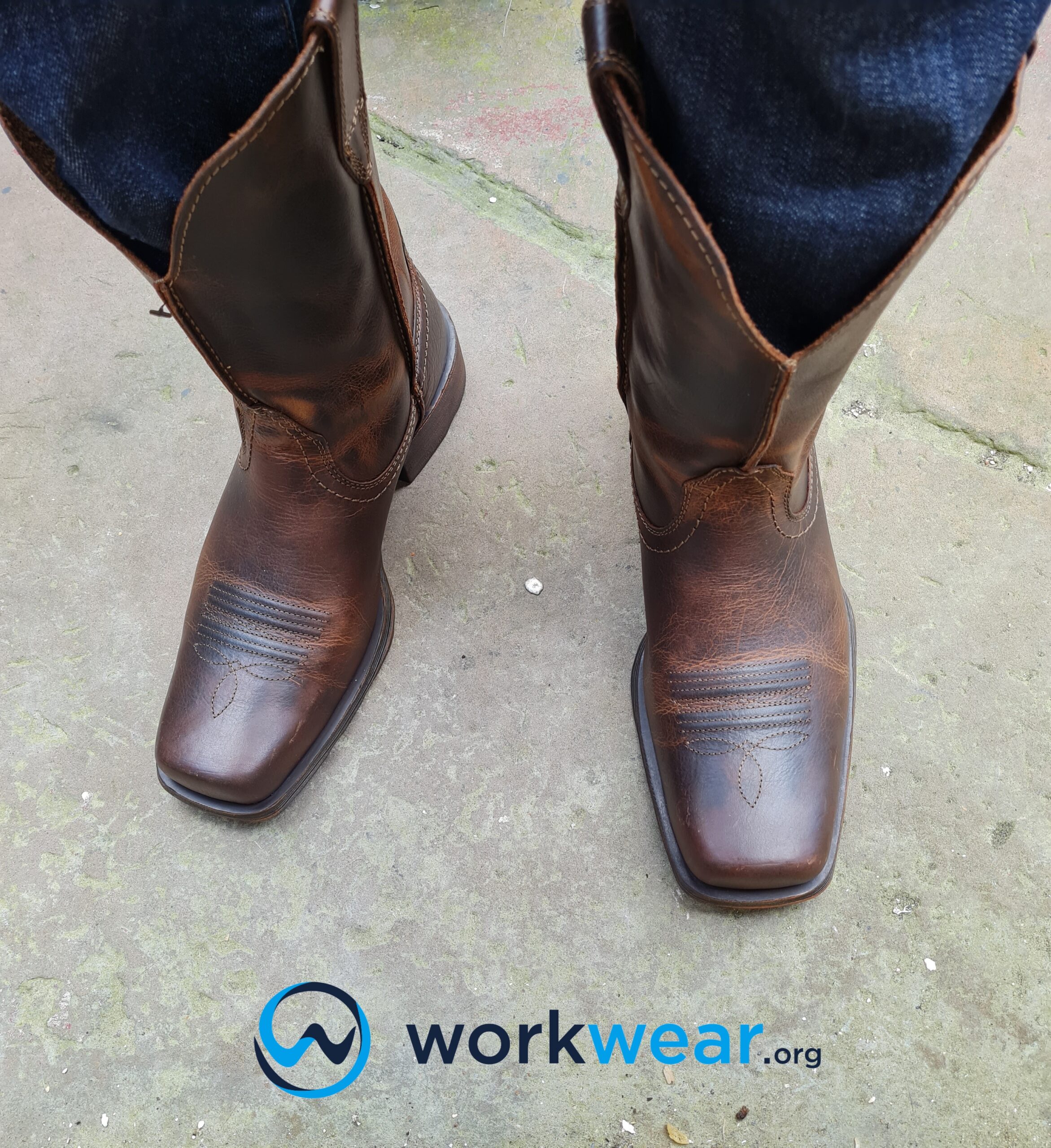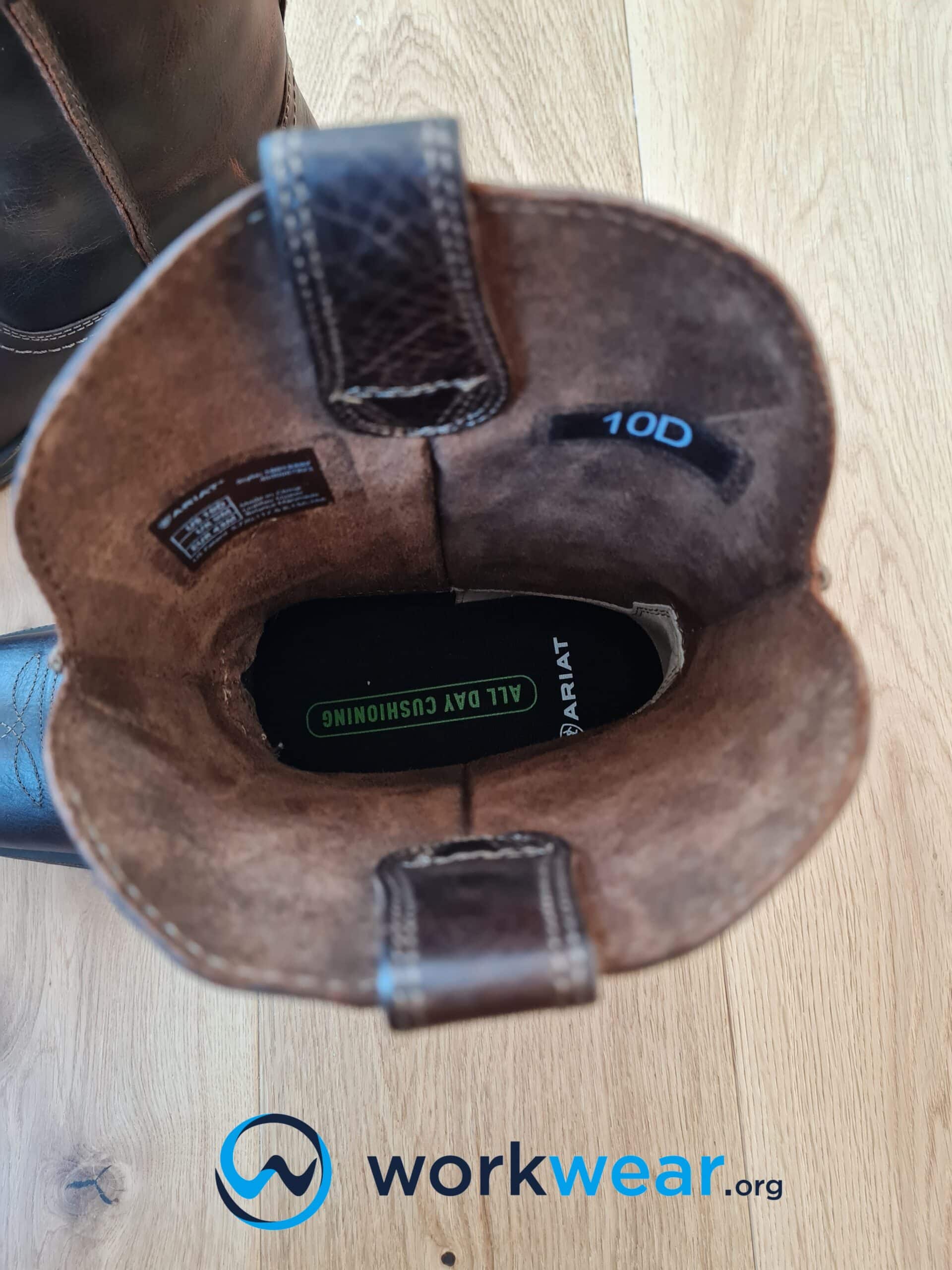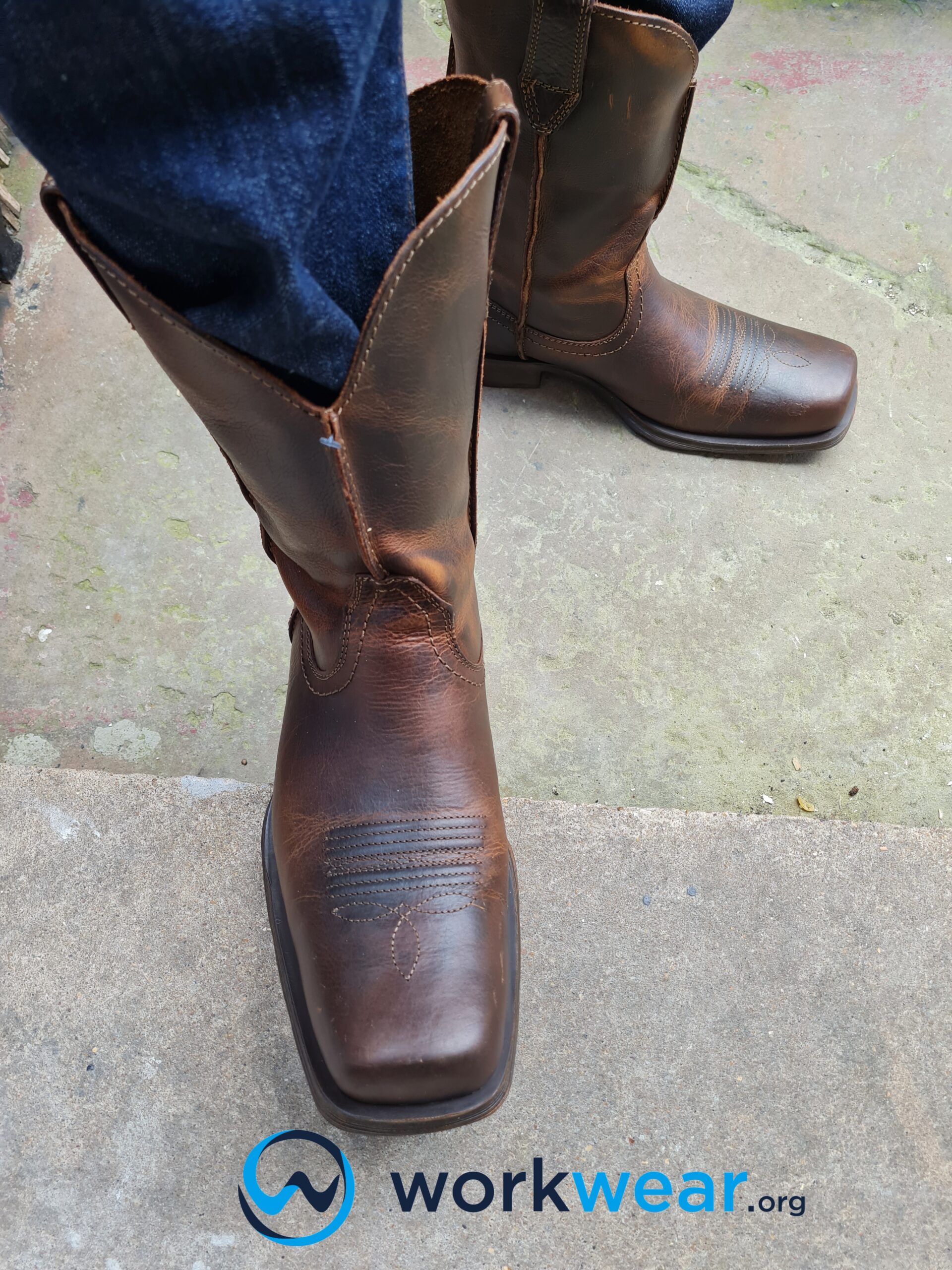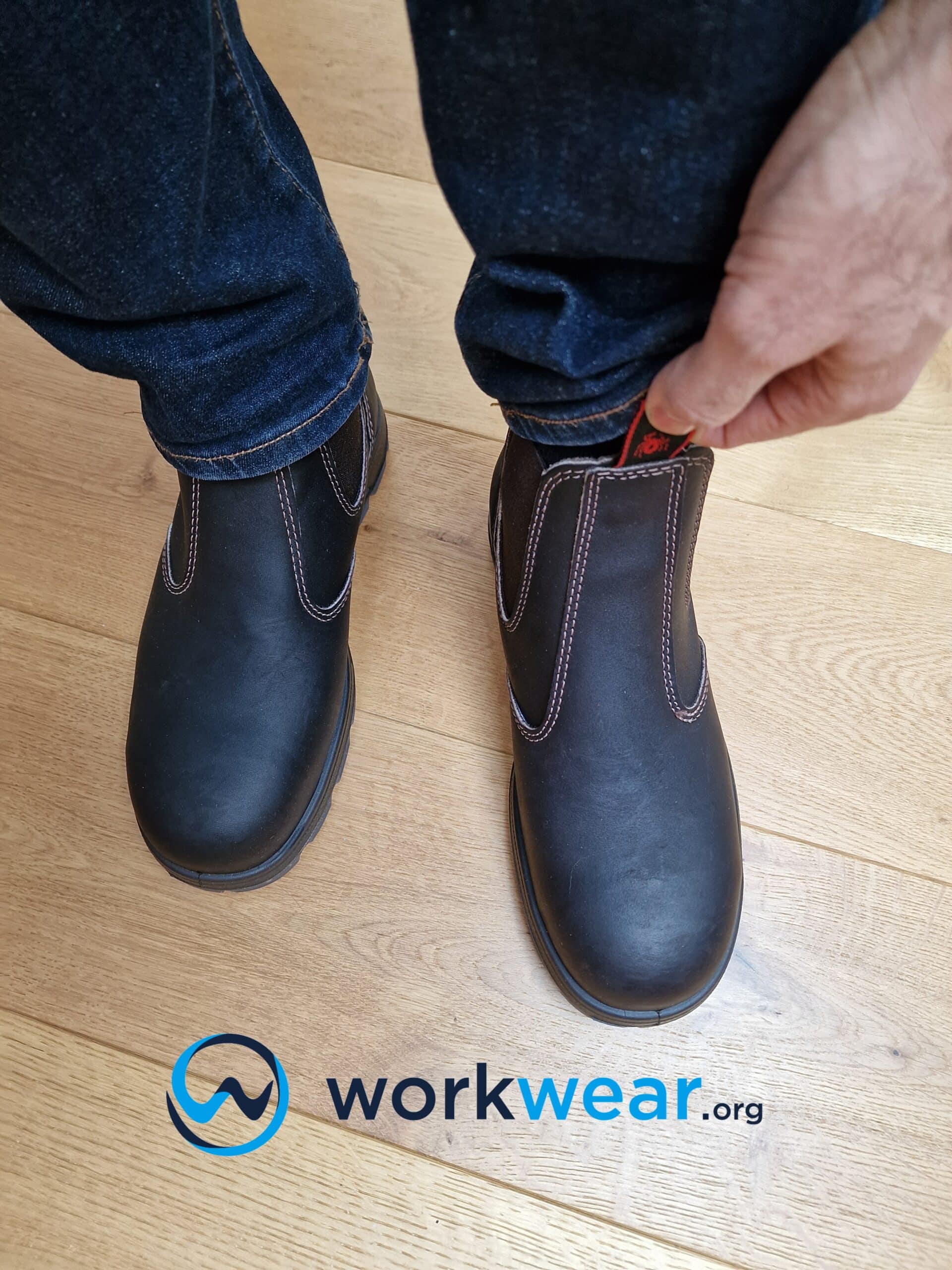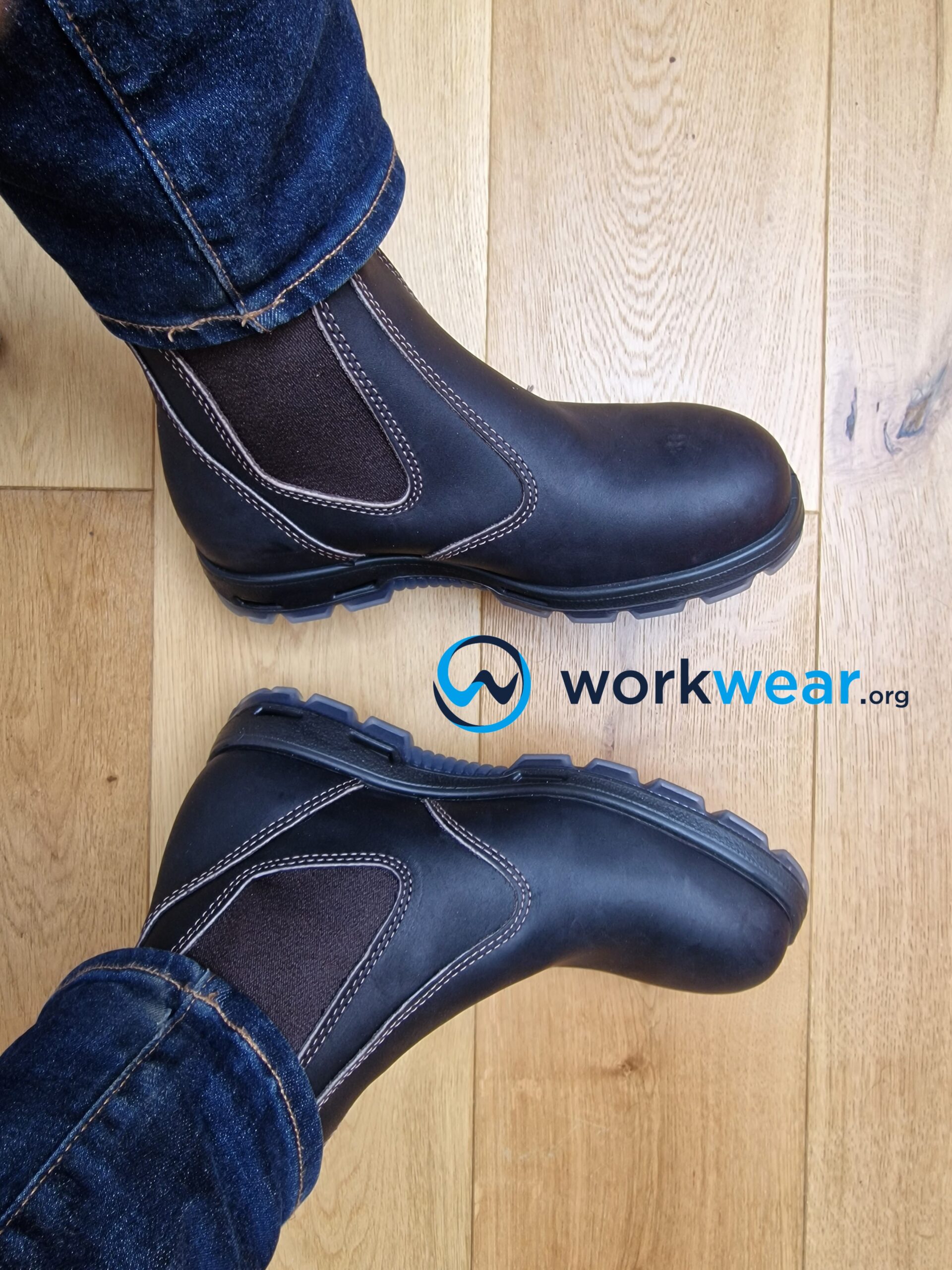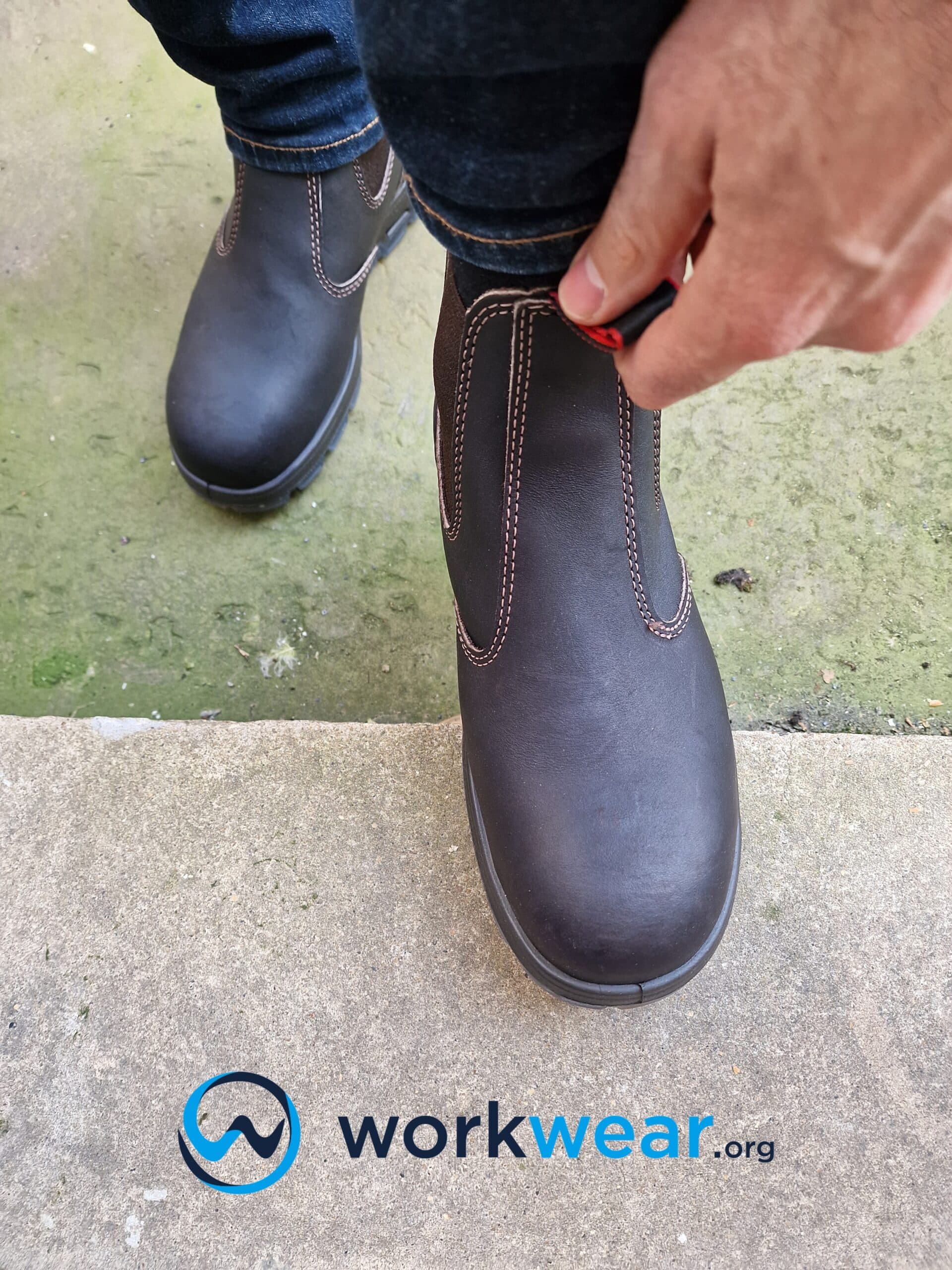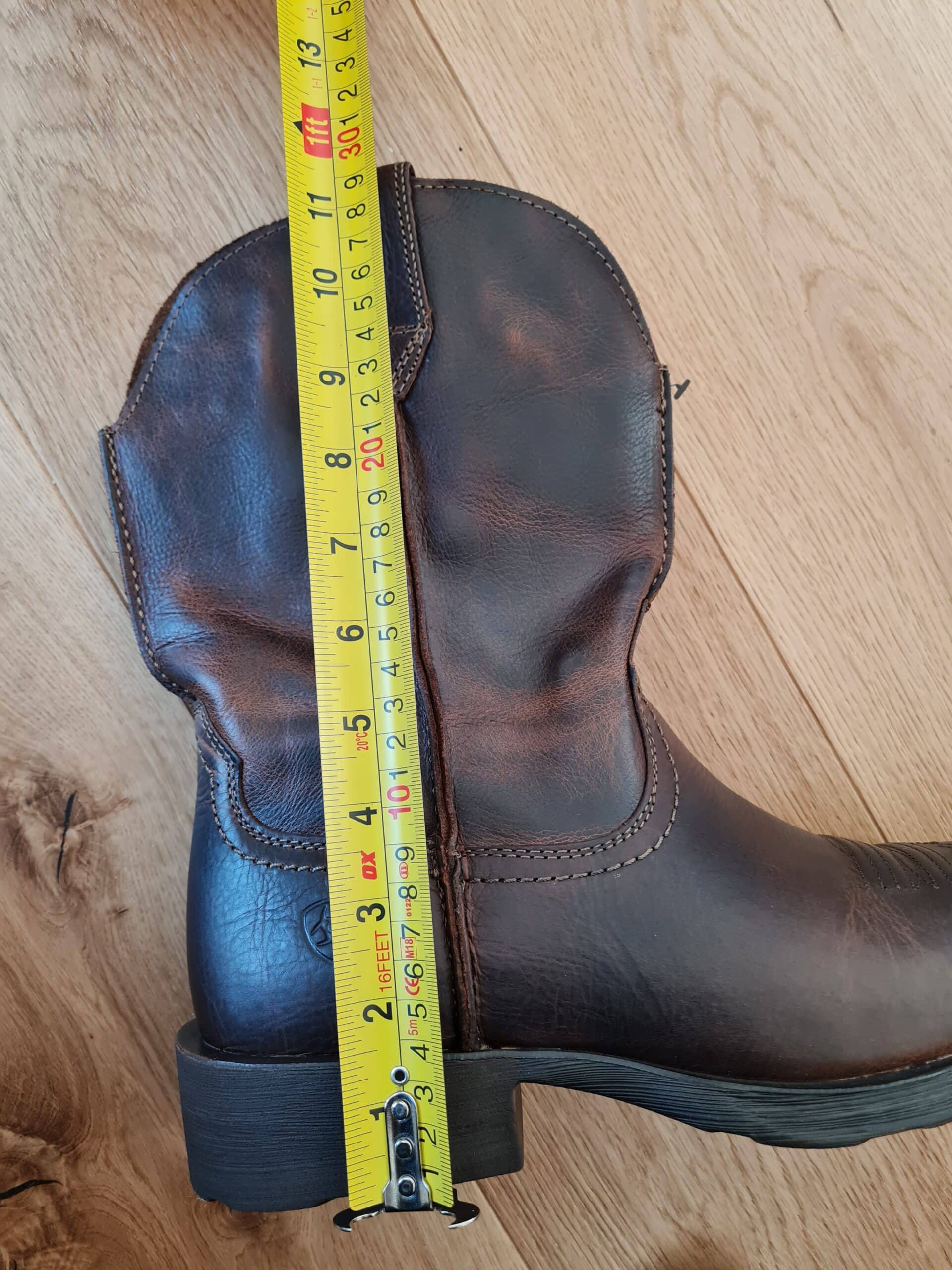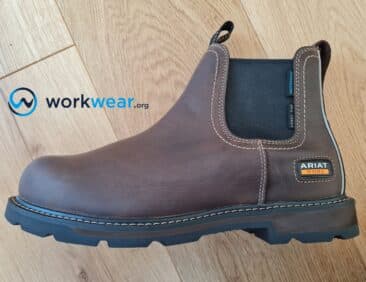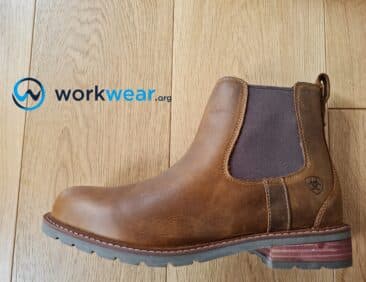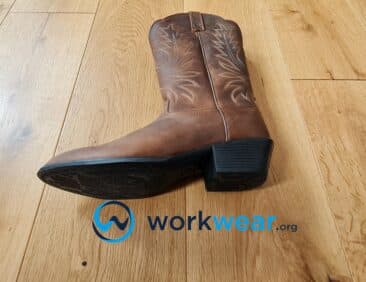Pull-on Boots Vs Slip-on Boots
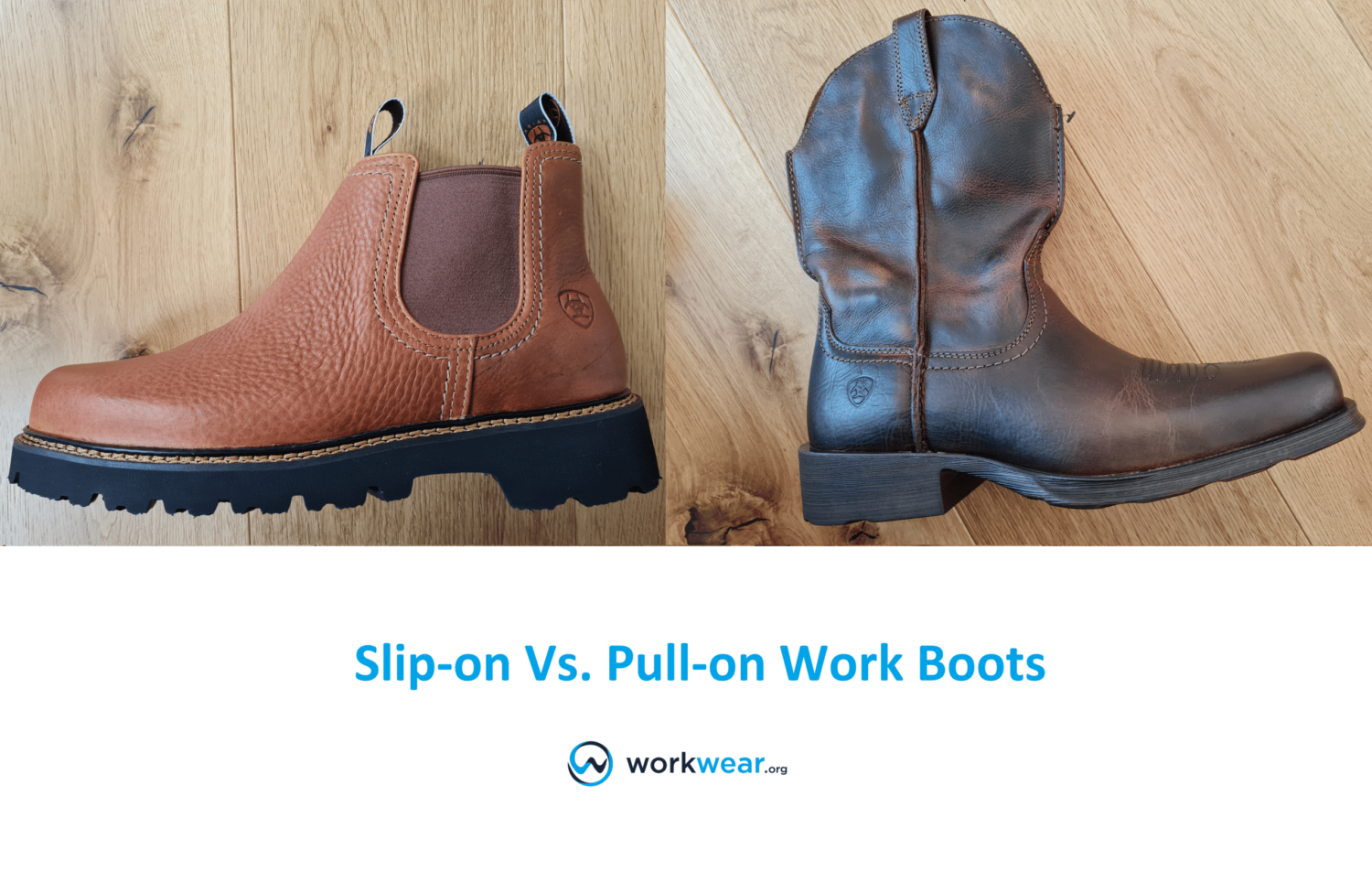
The right work boots can make daily activities in the work area that much safer and easier to manage. Aside from protecting the feet against safety threats in the workplace, work boots also keep the feet comfortable so walking and moving around can be done more effortlessly. When thinking of work boots, the traditional lace-up style may be considered first, but lace-free options – such as pull-on and slip-on work boots – offer multiple benefits as far as work footwear choices go.
What’s the difference between pull-on work boots and slip-on work boots? Differentiating between these styles may be tricky at first, especially since their distinctive features involve the absence of a conventional lacing system. However, slip-on work boots have variations from pull-on work boots, and learning about these slight differences can guide you to make the smarter choice when picking the best lace-free work footwear.
Pull-On Work Boots
As their name suggests, pull-on work boots are meant to provide convenience as they’re quickly pulled on. Without laces to fiddle with, these boots can quickly be worn with a bit of effort exerted on pulling the shaft. Pull-on work boots can also be fitted with pull straps that make these footwear options much easier to be pulled on, especially since they’re usually built with tall shafts that can reach the middle of the calf or even higher.
Key Advantages of Pull-On Boots
Lace-free use
Laces make it easier for work boots to be adjusted to fit better but can also cause problems, especially when they become untied. When laces are loosened, the boots’ fit can be negatively affected, causing an unstable feeling when walking. Untied shoelaces can also become tripping hazards as they can get caught in machinery and other items in the work environment. Pull-on boots don’t have laces, so there are no worries about encountering the issues that were just mentioned.
Quicker to wear and take off than lace-up boots
Without laces to fiddle with, pull-on work boots are quicker to wear. They’re designed to be pulled over the feet, shaving off the time usually spent on adjusting and then tying the shoelaces before the boots can be worn comfortably. Meanwhile, the designs that feature heel counters can easily be kicked off when the day’s work is done. Pull-on work boots are ideal for those who need to put on and take off their footwear throughout the day and for people who prefer a more convenient way of wearing work boots.
With pull straps for added convenience
Pull-on work boots are often equipped with pull straps on top of the shaft to aid in more convenient foot entry. The straps are built into the sides of the boots’ opening to help wear the boot more easily instead of pulling on the shaft material that can slip from the grasp.
Tall structure = increased coverage
These work boots are built with taller structures compared to slip-on boots. The tall shaft often reaches up to the mid-calf height or higher – such as the height of Wellingtons and cowboy boots. The added height provides extended coverage for most of the lower leg, so it’s more protected against the elements and other hazards in the surrounding area.
Often have roomy interiors
Pull-on work boots are often designed to be more spacious (especially on the top portion) to accommodate better the entry of the feet since the boots’ structures can’t be loosened or adjusted anymore. This results in the interior having extra space even after the foot is in place, allowing more comfortable foot movements without the cramped feeling.
Key Disadvantages of Pull-On Boots
Can feel unstable
With no laces that can be tightened or loosened as needed, pull-on work boots tend to feel unstable when there’s a bit of space inside. While this roomy feel can feel comfortable, it may also cause stability issues, especially when navigating challenging surfaces since the ankle isn’t locked in place.
It may feel bulky/ heavy
The tall height of pull-on work boots adds considerable weight that can start becoming uncomfortable with long hours of boot use. With more materials used in creating tall structures, these boots may feel bulky, especially when they’re used for walking around for prolonged periods.
Overheating can be a problem
Pull-on work boots have tall, solid designs that don’t welcome plenty of air. Without good ventilation, the boot can feel overheated when it’s used for hours, especially in hot surroundings, which can also increase the possibility of the feet becoming extremely sweaty.
Fit isn’t adjustable
Pull-on work boots don’t have laces that can be adjusted accordingly to tighten or loosen the footwear. As such, these boots’ fit can’t be adjusted, so it’s very important to get the correct size from the beginning to minimize fit problems with long-term use.
Limited availability of options with safety toes
Pull-on styles often come in soft-toe versions. Finding options with safety toe caps (such as the Carhartt 10-Inch Waterproof Steel Toe Wellington) can be challenging, so more effort will need to be exerted to enjoy both convenience and toe safety. Most safety toe work boots with extended heights (like pull-on styles) come with laces that allow fit adjustments.
Uses of Pull-On Boots
Pull-on work boots are ideal for environments where footwear needs to be pulled on and off quickly or multiple times during the workday, as well as for providing added convenience – making them great for the following jobs:
- Farmers
- Ranchers
- Linemen
- Electricians
Slip-On Work Boots
Slip-on work boots are built without laces but are shorter than pull-on work boots. This height offers even more convenience as less effort must be exerted to put the boots on comfortably. Instead of a pull strap, slip-on work boots have smaller pull tabs that make it easier for the feet to enter. These boots are offered in a wider variety with safety toes, so they’re easier to spot when searching for safety work boots without laces.
Key Advantages of Slip-On Boots
Quick boot on and off without laces
Slip-on work boots, as the name suggests, can be slipped on quite easily. They don’t have laces so putting them on and removing them takes a fraction of the time needed to have lace-up boots in place successfully.
No tripping hazards
Without laces that can get untied throughout the day, slip-on work boots don’t have components that can become tripping hazards. This eliminates the worry that loose laces can cause tripping, especially when they catch onto nearby equipment, tools, and other objects on the job site.
With either elastic gussets and/or pull tabs for comfort & convenience
These work boots can be slipped on hands-free, but sometimes help is required. Slip-on work boots may have elastic gussets (or twin gore panels), which are stretchable sections on the sides of the opening. These panels stretch to welcome the feet more easily and comfortably. Other slip-on boots may also have pull tabs that are built into the back (or front and back – like the ones on the Redcat Bobcat Chelsea Boot) of the top of the boot opening, helping with boot entry when a bit of effort is needed.
More breathable than high pull-on boots
As slip-on work boots are shorter than pull-on designs, more air is allowed to get in, and the heat also more easily escapes. This results in improved breathability and helps prevent overwhelming heat from building up inside after the boots are used for extended hours.
Typically, with relaxed fit designs
Slip-on work boots typically have roomy designs to enable your feet to slide in. These structures allow the feet to enjoy enhanced comfort as the relaxed fit promotes unhampered motion throughout the day. Unlike other boot designs, slip-on work boots don’t usually lock the feet in place, preventing a painfully tight feeling that can also restrict movement.
Widely available in safety toe work boot styles
More slip-on work boots are available with safety toe caps compared to pull-on styles. There are more styles and brands to choose from when you’re on the lookout for lace-free work boots that have safety toe caps built in. Slip-on work boots are also available in a wide variety of soft-toe options for those who don’t require safety toe caps in their footwear.
Key Disadvantages of Slip-On Boots
Ankle support isn’t strong enough
The roominess often provided by slip-on work boots also has a disadvantage. These boots don’t secure the ankle, increasing the risk of the ankle accidentally rotating when stepping over rocky, uneven, or inclined surfaces. Walking may also require more effort to achieve a stable feeling if the boots are extremely loose.
Can’t be adjusted for a better fit
Slip-on work boots don’t have laces that can be modified as needed. Their fit can’t be personalized because there are no laces that can be loosened or tightened. This may result in a fit that’s loose and unstable or painfully cramped if the right size isn’t chosen from the start.
Debris can more easily get in
The short height of slip-on work boots makes them susceptible to dirt and other debris entering more easily, compared to pull-on work boots that are much taller. This can be a problem when the slip-on work boots are used in areas where there are small objects that can accidentally go inside the footwear. Without laces to form a tighter fit, the boot’s opening can more easily welcome debris slipping in and causing foot discomfort.
Uses of Slip-On Boots
Slip-on work boots offer increased convenience and comfort with lace-free designs and more breathable structures. For improved safety in hazardous conditions, these boots are available in more styles equipped with safety toe caps. Slip-on work boots suitable for different jobs, such as:
- Auto mechanics
- Plumbers
- Warehouse personnel
- Engineers
Pull on Boots vs Slip on Boots – Comparison
| Boot Type |
Pros |
Cons |
|---|---|---|
| Pull-On Boots |
|
|
| Slip-On Boots |
|
|
Our Testing Experience
We tried the Ariat Rambler Western Boot and Redback Bobcat Boot – two work boots that performed remarkably well in the workplace while offering the convenience of lace-free boot use. The Ariat Rambler Western Boot is a handsome pull-on soft-toe work boot featuring effortlessly weathered leather and discreet stitching, making this one of the most stylish Western boots in our book. It was true to size, so it was surprisingly snugger compared to other Western work boots we’ve previously tried. The slip-on Redback Bobcat Boot, on the other hand, had a steel toe cap for enhanced toe protection in hazardous worksites. It was comfortably cushioned, and the relaxed fit made the interior spacious, though we won’t recommend this for those who prefer a more secure fit. Pull tabs were built into the front and back sections of the boot’s opening so it can be pulled on more easily. Both of these work boots were quicker to put on and remove than lace-up designs and were comfortable to use throughout busy workdays.
Conclusion
Pull-on work boots and slip-on work boots are both ideal for jobs that will benefit from the quick boot on and off without compromising superior function, but their differences are worth noting for maximum benefit. Pull-on work boots are taller and generally have a more relaxed fit than slip-on boots. They’re also fitted with pull straps, and typically don’t have safety toes (as they’re more focused on enhancing style), making them suitable for non-hazardous environments. On the other hand, slip-on work boots are more safety-oriented, typically equipped with safety toe caps for enhanced safety without compromising a good fit and convenient use. They’re shorter than pull-on work boots and have a slightly snugger (yet still relaxed) fit for added comfort, with pull tabs and elastic side panels so the feet can enter more easily. The distinct features of each style should be noted, as well as the conditions where they’ll be used, to ensure that the best choice will be made between pull-on and slip-on work boots.
FAQs
- Are lace-up work boots more stylish than pull-on work boots?
- Lace-up work boots may often be considered more appropriate for settings that call for formal attire, but they’re not necessarily always the more stylish option. Some styles, such as Western boots with elaborate stitching, can be chic enough to hold their own and even stand out when used with fashionable clothing.
- Will pull-on or slip-on boots be ideal for jobs that require heavy lifting?
- For professions that require heavy lifting and other physically demanding tasks, it’s best to choose lace-up work boots. These boots can secure the ankles and heels, promoting continuous stability (while moving and walking around) that can’t be delivered by slip-on or pull-on work boots.
- Are slip-on work boots suitable for working outdoors?
- These boots can be used outdoors, especially with waterproof materials. However, without laces to tighten the short structure shaft, water and debris may enter more easily from the boot’s opening when working around puddles or dirt-strewn areas.
- Can the elastic gussets help with adjusting the fit of slip-on work boots?
- No. The elastic gussets (also called twin gore panels) stretch to accommodate the easy entry of the foot, but they can’t be tightened to make the boot fit more securely over the ankle. It’s also worth noting that, in time, these panels may lose their elasticity and further loosen the boot’s fit.
